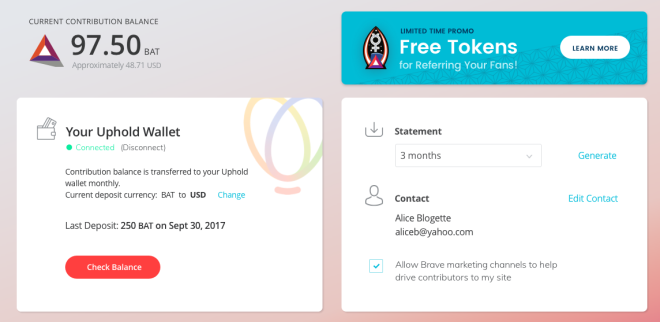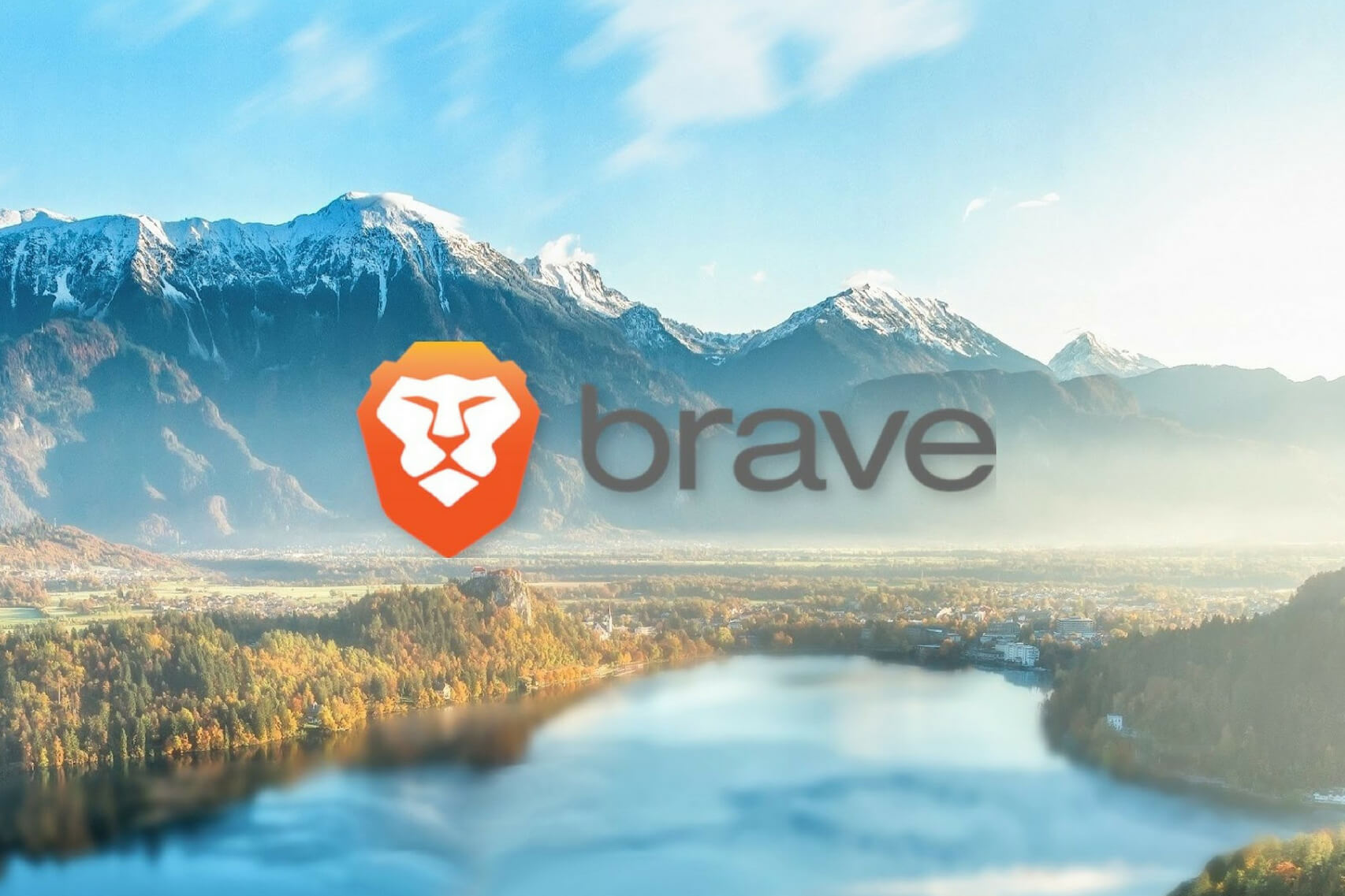Download the Brave Browser.
Brave Software has had a productive year.
It started with a $1 million Basic Attention Token (BAT) giveaway in January, followed by significant updates to the browser and approval from Apple to bring BAT payments to iOS devices.
Most recently, the Brave Software team announced the upcoming ability to tip Twitter and Reddit users via Brave Payments.
To keep the momentum rolling, Brave Software hosted a Q&A session with CEO Brandon Eich, creator of Javascript and co-founder of Mozilla. Eich fielded questions from the community and addressed everything from the Brave Ads program to the value of BAT, all while focusing on the promising developments in Brave Software’s future.
Top 3 Priorities
Brave is an established and successful project. In July, the browser reached an impressive 3.1 million active users. The team is always working on new initiatives, of course, and one user asked Eich if he could elaborate on the top three.
For BAT, the Brave Software team is prioritizing additional User Growth Pool (UGP) grants, creator referral awards, and onboarding more publishers. They’re also looking at building resistance to sybil attacks, which some users see as a real threat to the cryptocurrency’s security.
For the Brave browser, the team is prioritizing bug fixes, performance and memory improvements, and extension support for the desktop versions of the software. BAT payments are also coming to Brave on Android and iOS, though it’s not currently a top priority for the development team.
Funding Brave with BAT
When Brave was announced in 2015, there were already a few successful cryptocurrencies dominating the market. One user asked why Brave Software chose to launch its own cryptocurrency (BAT) instead of going with an established token such as ETH.
According to Eich, it all comes down to funding. By launching the Basic Attention Token, Brave made it possible to raise money for the project. Without this step, the team would have to rely on wealthy benefactors to donate vast amounts of cryptocurrencies with no guarantee of returns.
The second reason is the User Growth Pool, Brave’s fund for expanding the number of users paying creators via the browser’s wallet system. Raising funds through BAT allowed the team to fill the UGP before launch. This ensured the ecosystem would have a steady source of growth over the following years without having to rely on donations.
Brave recently announced an initiative to give away $500,000 in BAT every month to help users pay content creators for their efforts. These funds come directly from the UGP.

The User Growth Pool provides small BAT airdrops to top up browser wallets. (Image via Brave.com)
Engaging a Wider Audience
A vital step in any cryptocurrency project’s growth is reaching out to the non-technical audience. This is crucial for Brave Software’s success, as it relies on wide adoption of the browser in order for BAT to take off.
Eich briefly outlined the basics of browser adoption. It starts with lead users, the early adopters who are quick to hop on new and innovative technologies. So far the Brave team has been focusing on pleasing these core users.
To reach mainstream, Brave needs to provide a smooth experience that insulates non-technical from the complexities of cryptocurrencies. The team is looking into Brave Wallet funding via credit card to ease this transition. End users will have the option of using cryptocurrency payments if they want, but they’ll never be forced into doing it.
Transitioning to BAT and Brave Ads
Getting users to adopt the Brave browser is one issue. Convincing publishers to jump from traditional digital advertising to a smaller, untested cryptocurrency-based program is another challenge entirely.
A user with experience in the publisher/advertiser industry asked Eich how Brave plans to avoid short-term transition pains for publishers as they move to BAT. Eich’s response was simple: make it a positive sum game.
The biggest threat to ad revenue under the current model is ad blocking software. Many tech sites have resorted to hostile tactics, forcing users to “whitelist, subscribe, or get lost,” according to Eich. This damages the relationship between content creator and reader, and it erodes a publication’s Alexa rank, as well.
Eich believes the BAT program and Brave Ads can help websites win those users back, and make it a profitable experience for both parties. The initiatives get rid of barriers and middlemen, allowing readers to directly reward creators for their efforts.
As for the personalization algorithms publishers rely on for ad targeting, Brave is working on those, too.
In a brief example, Eich outlined a user shopping for cars. They have Brave tabs open on both BMW and Mercedes dealerships. In the future, Mercedes could pay a fee to advertise to the targeted user under these circumstances. If the cost for that ad was $70 and the user had opted into Brave Ads, they would then receive a $49 cut.
These deals have yet to be locked down, but Brave is making good progress overall. “I’m not worried about getting ad trials,” Eich stated.
Watch Ads, Earn BAT
Apart from BAT micropayments, Brave Software has another plan to fix online advertising: Brave Ads. The trial program launched in June 2018 and allows browser users to opt-in and get paid to view verified, safe ads from Brave Software’s network of publishers.
When Brave Ads launches to the general public, Eich believes it could be a viable alternative for website owners. In addition, users who opt to view these ads will receive small BAT payments in return.
Although Brave Ads isn’t designed to be full-time income for viewers, one user was curious how much money could realistically be earned by opting in.
In the U.S. alone, about $80 billion is spent on digital advertising each year. If Brave Ads replaced that entire industry and everyone in the U.S. opted in, they could expect to earn $9.60 per year, on the lower end.
Brave won’t work quite like that, however. For private ads, users will get a 15% cut from the publishing partner’s fees. After doing the math, that works out to $224 per person, per year, as a potential upper limit. Though as the car shopping example above illustrates, there will be outliers.
BAT vs Patreon
The Patreon funding method has taken off in recent years. The service allows users to establish monthly subscriptions to creators, opting to donate varying amounts of fiat currency to support their favorite content.
At first glance, Brave offers a similar funding model. But Eich pointed out two main differences that gives BAT payments an edge on the Patreon competition.
First, Brave users can donate BAT to anyone, not just creators who sign up with a certain website. Verified creators can join the program for easier transactions, but it’s not a prerequisite. Users can fund whomever they like with BAT from the moment they fill their payments wallet.
Second, Brave does not censor first parties and will never intervene in the type of content that can be funded with BAT. Patreon has been known to shut down accounts in the past, especially those offering adult content. BAT’s decentralized and anonymous nature prevents this from becoming a problem.
Brave Buyout
A user pointed out that the Brave browser is an obvious buyout target for other browser companies as well as ad revenue companies. If this were to happen, what would become of BAT?
Eich doesn’t believe a buyout is feasible until Brave reaches the Gemini phase. After that, abandoning BAT would be self-destructive, as its an integral part of the entire ecosystem.
According to Eich:
We’re the GDPR or ‘user privacy by default’ option the bigs need. To the extent they cannot move their large-share attention apps toward BAT, they need separate apps.
Conclusion
Eich fielded pre-approved community questions for over an hour, covering a wide range of topics relating to BAT and the Brave Browser.
Overall, the project seems to remain on stable footing. Support for extensions is in the works, payments for the mobile browsers is coming along nicely, and new features like anonymous spot payments are under consideration.
Brave’s massive Gemini update is slated to release by the end of the year. If all goes well, it could be an even bigger milestone for Eich and the Brave Software team.
Related: Brave Browser: Creating a Private, Cryptocurrency-Driven Web
Download the Brave Browser.

